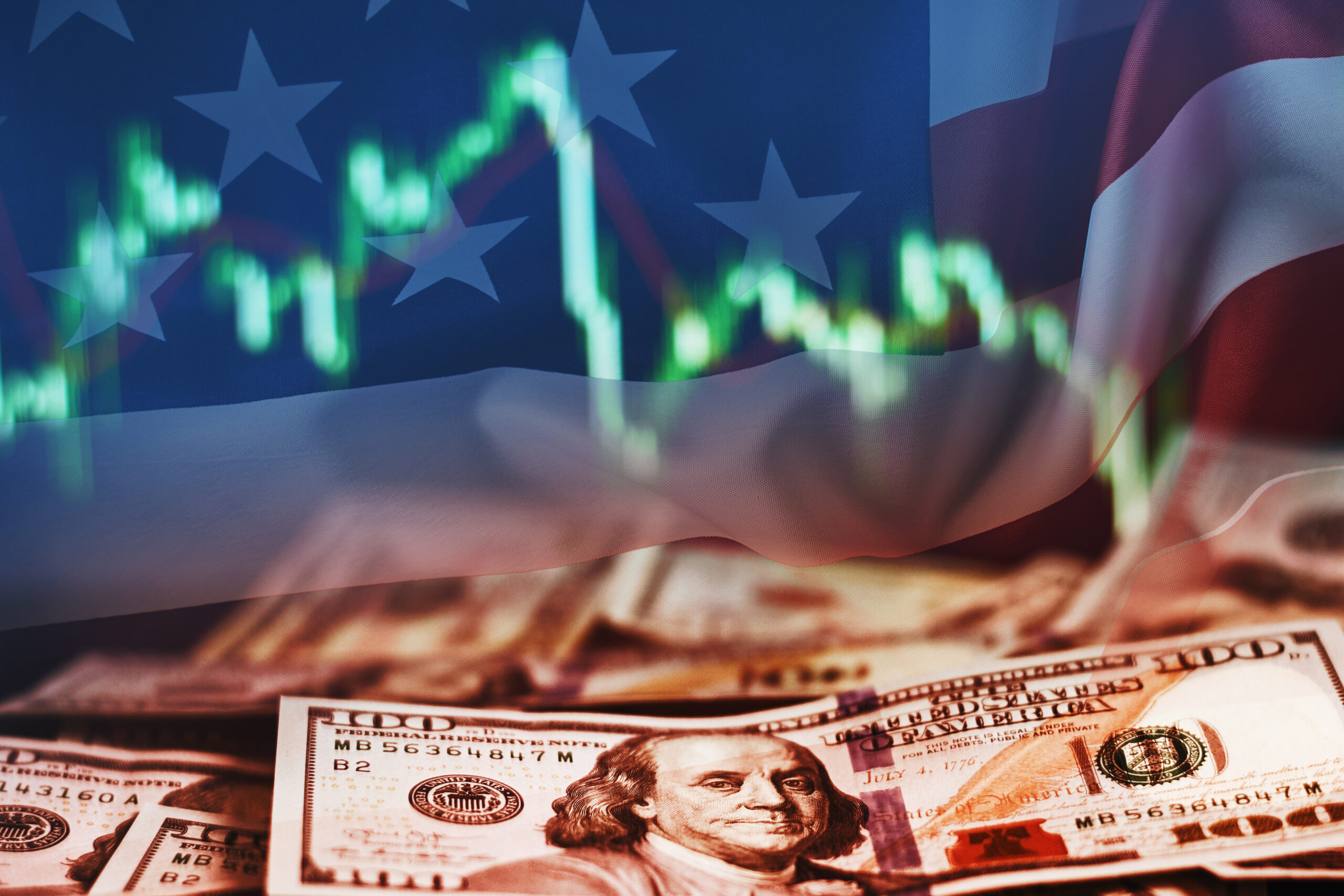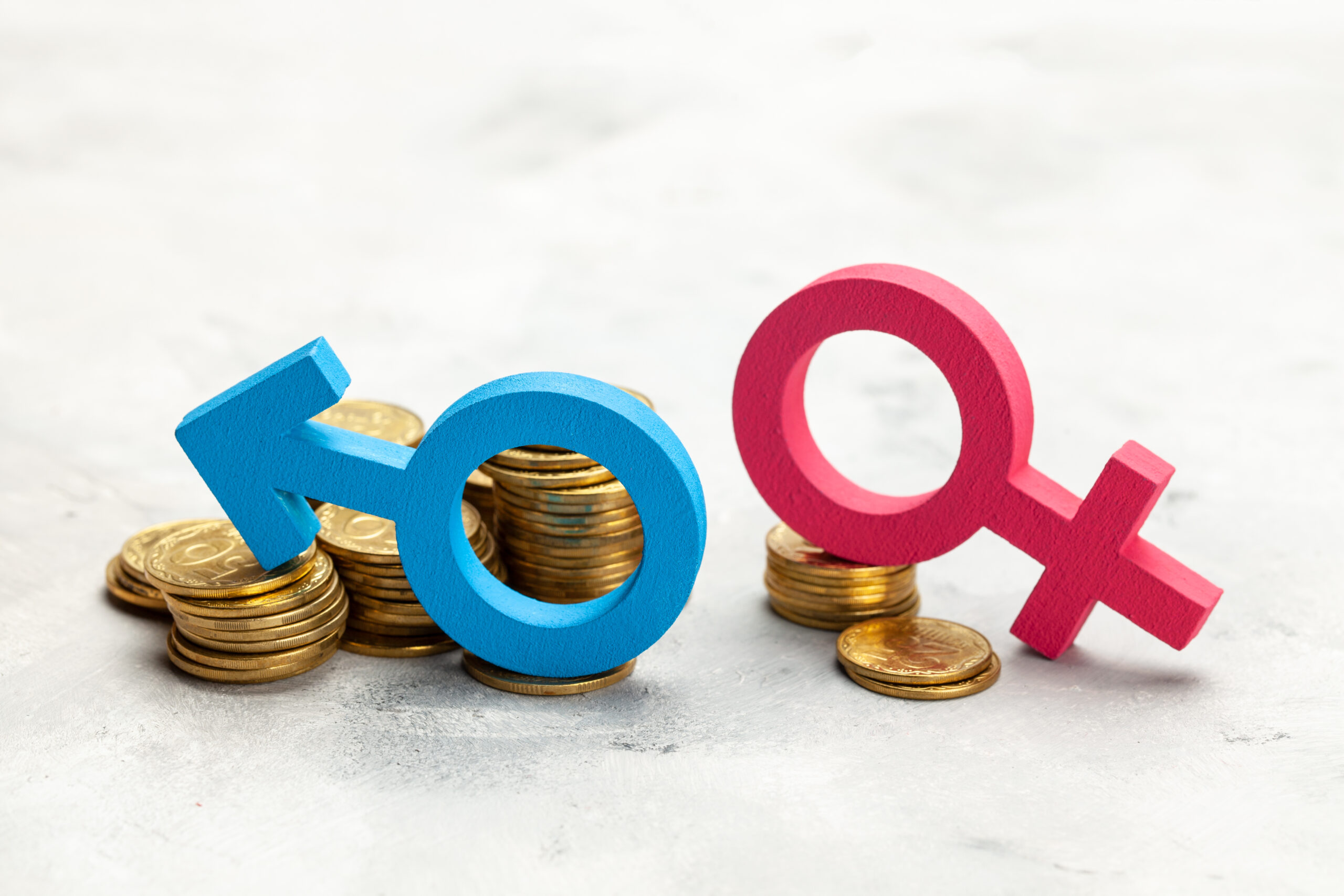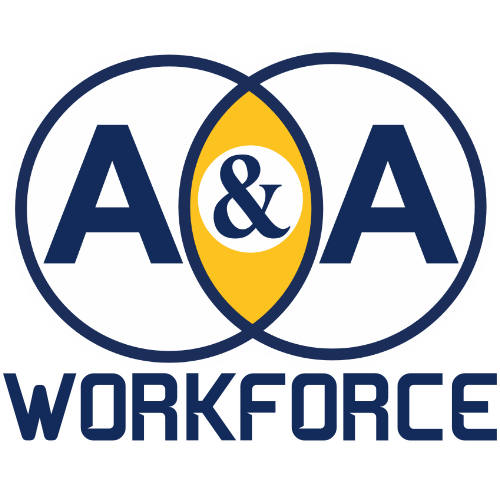Building Stronger Communities Through Workforce Readiness
A&A Workforce is a national nonprofit dedicated to breaking down the barriers that keep people from finding and keeping meaningful employment. Since 2009, we’ve supported job seekers across the country offering rapid job placement, mentorship, and critical support services like transportation, clothing, and childcare assistance. Whether you’re looking for a second chance or a fresh start, A&A Workforce is here to help you succeed.
25,000+ Lives Impacted
Wraparound Support That Works
Faster Pathways to Employment
Equity Is at Our Core



But for all the activity, the results have been devastating for working people in the United States and abroad. While billionaires are thriving under a new pro-corporate doctrine, millions of everyday Americans face rising prices, job losses, and the disappearance of essential social protections. At the same time, people in crisis around the world are suffering due to the abrupt dismantling of humanitarian aid and global health support. These actions are not accidental they reflect a deliberate policy agenda designed to increase inequality, weaken worker protections, and transfer wealth upward.
This is what the Trump-Musk administration is doing. And this is what we must challenge.
The Collapse of Humanitarian Aid
In February 2025, President Trump announced his plan to dismantle the United States Agency for International Development (USAID), freezing nearly all foreign assistance and initiating the transfer of remaining operations to the State Department. Since then, the collapse of U.S. humanitarian aid has contributed to rising famine, disease outbreaks, and political instability in dozens of countries.
Millions of people who once depended on U.S. support for clean water, basic healthcare, and food assistance are now left behind. Ongoing conflicts in places like Yemen, Sudan, and the Horn of Africa have intensified without peacebuilding programs or economic recovery initiatives. Maternal health services, school feeding programs, and community development projects have all been slashed.
In March, the administration cut funding for global childhood vaccination programs, eliminating U.S. contributions to Gavi and other international partners. The impact is already visible. Measles outbreaks have surged in refugee camps. Children in the poorest regions are dying from preventable illnesses while wealthier nations turn away.
The administration has also recommitted to the Global Gag Rule, denying funding to any organization that so much as mentions abortion even if the services are legal in the country of operation. This has cut off sexual and reproductive health services to millions of women and girls in vulnerable communities.
The result is widespread suffering, preventable deaths, and a total reversal of decades of bipartisan investment in global health and development.
An Immigration System Built to Exclude
President Trump’s second-term immigration policies are some of the most extreme in U.S. history. Within his first month in office, he suspended the refugee admissions program, terminated temporary protected status (TPS) for migrants from multiple conflict-affected countries, and reinstated the Remain in Mexico policy, forcing asylum seekers to wait in dangerous conditions across the border.
The administration has also ended the use of the CBP One app, previously one of the only legal ways to request asylum at the border and begun mass family detentions once again. There are now credible reports of masked federal agents conducting unannounced raids in urban centers, removing migrants without due process and deporting them to prisons abroad with no ability to appeal.
New laws like the Laken Riley Act allow the deportation of immigrants based solely on criminal accusations not convictions placing thousands of people at risk of unjust removal and separating countless families.
These efforts come with immense human cost. Parents are torn from their children. Survivors of domestic violence and war are returned to countries they fled. Legal asylum pathways have been gutted. The administration’s approach criminalizes migration and ignores both international law and basic human dignity.
A Deepening Climate Crisis, Driven by Policy
On his first day back in office, President Trump withdrew the United States from the Paris Agreement for the second time. He declared a national “energy emergency,” revoked clean energy subsidies, and signed executive orders dismantling major climate initiatives funded under the Inflation Reduction Act.
Offshore wind projects were halted. Regulations requiring automakers to transition to electric vehicles were canceled. States like New York and Vermont, which have set up climate superfunds to hold fossil fuel companies accountable for environmental damage, are now being targeted by the Department of Justice under a new executive order from April 8.
Polluters are no longer being held accountable. The Environmental Protection Agency (EPA) has created a direct contact system for corporations to request exemptions from Clean Air Act requirements. This opens the door to a wave of unregulated emissions and environmental damage especially in low-income communities and communities of color already facing disproportionate exposure to toxic air and water.
This administration is making a choice to put profit ahead of planet. And those who will suffer most are the people least responsible for the climate crisis.
An Economy that Works for the Richest Few
President Trump has promised to "make America affordable again," but his policies so far have focused almost entirely on enriching the wealthiest Americans. In April, he endorsed a budget resolution proposing more than $1 trillion in cuts to Medicaid, food assistance, and housing programs, while championing the renewal of the Tax Cuts and Jobs Act a $5.5 trillion giveaway to corporations and the ultra-rich.
He has imposed sweeping tariffs that have disrupted global trade, raised consumer prices on food, energy, and household goods, and risked sparking a new global recession. Far from protecting American families, these tariffs increase everyday costs while destabilizing the global economy punishing workers around the world to advance a narrow political agenda.
The administration is also slashing federal workforces at agencies tasked with enforcing labor rights, environmental protections, and tax compliance. Thousands of staff at the Internal Revenue Service have been laid off, weakening efforts to hold wealthy tax dodgers accountable.
This is a vision of the economy where billionaires prosper and everyone else is expected to make do with less.
What We Are Doing and How You Can Help
Despite these attacks on human rights, democracy, and equality, resistance is growing. In recent months:
-
Oxfam and a coalition of over 130 organizations submitted a joint letter to Congress demanding the protection of foreign aid and USAID.
-
Legal teams are actively fighting back against executive orders targeting aid, asylum, and climate protections. Several injunctions have been granted, including a temporary freeze on the ending of birthright citizenship.
-
Our Sisters on the Planet ambassadors and grassroots volunteers have held more than 130 meetings with lawmakers on Capitol Hill, demanding a fair tax system and stronger protections for workers and families.
-
Major demonstrations have taken place across the country, including protests on International Women’s Day, President’s Day, and Earth Week, opposing the administration’s rollback of rights and protections.
Change is not coming from Washington alone it is rising up from communities across the country.
The Time to Act Is Now
We are facing a pivotal moment in history. The policies being enacted today will shape our lives for decades to come. Whether it is protecting access to food, fighting climate destruction, defending immigrant rights, or ensuring working families have what they need to survive the stakes are too high for silence.
Support this work. Call your representatives. Join a protest. Donate to organizations fighting on the front lines. Stand up for the people and communities this administration has tried to leave behind.
A more just, more equal future is still possible. But only if we fight for it together.

According to the most recent U.S. Census Bureau data, the pay gap widened again in 2024. On average, full-time, year-round working women earned just 81 cents for every dollar earned by men. For Black women, the gap was 64 cents, and for Latinas, it was 54 cents. The gender pay gap is not simply a statistic it is a measurement of systemic inequality that touches every woman, every paycheck, and every community.
Understanding the Pay Gap: It’s Not Just About Equal Work
There is a common misconception that the pay gap only reflects women being paid less for doing the same job as men. In reality, the reasons are deeper and more complex. They include systemic discrimination, occupational segregation, and policy failures that undervalue the work women do—particularly women of color. Women are often pushed into lower-paying sectors such as caregiving, hospitality, and education, and are underrepresented in leadership roles or higher-paying industries like tech and finance.
Moreover, women are far more likely than men to leave the workforce to care for children, aging parents, or family members with disabilities. These caregiving responsibilities, compounded by a lack of paid family leave and affordable childcare, lead to long-term losses in income, advancement, and retirement savings. The cost of motherhood alone reduces lifetime earnings by hundreds of thousands of dollars.
Workplace discrimination plays a quiet but persistent role as well. Women tend to start their careers earning less than their male counterparts, and that initial gap widens over time. Even when women pursue higher education or climb the career ladder, the wage gap follows. Today, a woman needs one more degree than a man to earn the same salary in many fields.
Why Race, Gender, and Class Cannot Be Separated
The wage gap cannot be fully understood without also examining the role of race and class. Women of color face some of the steepest pay disparities in the workforce, not because they are less skilled, but because of deeply rooted structural inequalities.
In the United States, 34 percent of working women of color earn less than $17 per hour, compared to just 19 percent of men. They are disproportionately concentrated in jobs that lack basic protections—jobs without sick leave, without health insurance, and without pathways for advancement. These workers often live in communities with limited access to affordable transportation, childcare, or educational opportunities.
The roots of this inequality stretch back generations. Historically, sectors dominated by women of color were intentionally excluded from early labor protections, and that legacy continues today. Women of color are the backbone of essential industries, yet their labor remains systematically undervalued. The wage gap is not just a gender issue. It is a racial justice issue, an economic issue, and a human rights issue.
The Impact on Families, Futures, and the Economy
The gender pay gap affects more than just women it affects the families they support and the communities they strengthen. Lower wages mean less income for food, housing, healthcare, education, and savings. It means higher poverty rates, greater dependence on public assistance, and less ability to weather emergencies.
Women’s earnings plateau mid-career, while men’s continue to climb. This contributes directly to the wealth gap and leaves women especially vulnerable in old age. Widowed, divorced, and single women over 65 are among the most financially insecure groups in the country. The lifetime impact of unequal pay can result in over $400,000 in lost income for full-time, year-round working women.
This inequality also slows down economic growth. When women are paid less, they spend less. When they are overburdened with caregiving responsibilities, they participate less in the workforce. Closing the wage gap would not only benefit women it would inject billions into the economy and help build a stronger, more resilient middle class.
The Solutions: Policy That Reflects Reality
The gender wage gap is not an accident. It is the result of choices policy choices, corporate practices, and legal loopholes that allow inequality to thrive. But it can be reversed.
To close the gender pay gap, we must:
Strengthen equal pay laws. We need federal legislation like the Paycheck Fairness Act to enhance transparency and hold employers accountable.
Raise the minimum wage. The current federal minimum wage has not been raised in more than 15 years. Raising it to match the cost of living would lift millions of women out of poverty.
Eliminate subminimum wages. Tipped workers most of whom are women can legally be paid as little as $2.13 per hour. These outdated laws trap workers in poverty and must be abolished.
Guarantee paid family and medical leave. No one should have to choose between their health, their children, or their paycheck. Policies like the FAMILY Act would create a national paid leave standard.
Ensure access to affordable childcare. Accessible care allows women to participate fully in the workforce and invest in their careers.
Disrupt occupational segregation. Women should be supported and encouraged to enter higher-paying, male-dominated fields, while wages in female-dominated sectors should be raised to reflect their value.
Protect the right to unionize. Unionized workers, especially women, experience significantly smaller wage gaps. The Protecting the Right to Organize (PRO) Act would give workers more power to demand fair treatment.
Where We Go From Here
Pay equity is not just about fairness. It is about acknowledging the value of all work and all workers. It is about building an economy that includes everyone, regardless of gender, race, or background. In 2025, there is no justification for an economy that rewards privilege over performance and punishes people for caregiving, motherhood, or their identity.
Progress is not inevitable it requires pressure, policy, and collective will. Advocates, researchers, and everyday people are working to close the wage gap, but lasting change will only happen when institutions and lawmakers respond with action.
At A&A Workforce, we believe in equal opportunity and economic justice. We support workers especially women and women of color who are fighting for fair wages, supportive policies, and a chance to thrive.
Support pay equity. Raise your voice. Advocate for policies that protect and uplift working women. Together, we can create an economy where everyone is paid what they are worth.

The promise that hard work should lead to a better life remains broken for nearly half of all working people. According to recent figures, over 52 million workers are earning less than $17 an hour. More than 25 percent of them lack any form of earned sick leave, and a growing number have little to no access to paid time off or healthcare coverage. These jobs are overwhelmingly concentrated in sectors like food service, hospitality, caregiving, and retail industries that kept the country functioning during a global health crisis, but that still offer their workers little protection or dignity in return.
The pressures on these workers have only intensified. Inflation continues to outpace wage growth in key areas like housing, transportation, and healthcare. The federal minimum wage has not increased since 2009, while the cost of living has surged. Many of the fastest-growing jobs in America home health aides, delivery drivers, grocery clerks continue to offer hourly wages that fall far below what is required for even a modest standard of living in most regions.
These jobs are vital. They involve preparing food, cleaning public spaces, caring for children and seniors, stocking store shelves, and responding to customers. Without this labor, communities do not function. Yet the economy continues to undervalue those who do the most essential work. Even as CEOs report record earnings and companies expand their automation capabilities, the human beings behind everyday services are forced to make impossible choices between paying rent or filling prescriptions, working through illness or losing their income entirely.
This is not an accident. It is the result of decades of policy decisions that have favored corporations over communities, deregulation over fairness, and temporary profits over long-term equity. But this reality can change if lawmakers and institutions prioritize people over profit.
Today’s researchers and advocates are renewing calls for a national reckoning on how the economy treats its most vulnerable workers. Among the most urgent policy changes now being advanced:
• Raising the federal minimum wage to reflect the real cost of living in 2025
• Mandating access to earned sick leave for all workers, regardless of sector or employment status
• Reinforcing and expanding overtime protections that are under legal attack in multiple states
• Reforming and broadening access to the Earned Income Tax Credit, especially for workers without dependents and those under 25
These changes are not radical. They are realistic, evidence-based reforms designed to create a healthier and more sustainable economy. The data continues to show that these policies increase worker retention, improve family stability, and boost local economies through stronger consumer spending.
The human cost of inaction is disproportionately borne by women and people of color. Today, nearly 60 percent of Hispanic workers and 55 percent of Black workers earn less than $17 per hour. For women of color, the numbers are even more stark many are supporting households as single parents, working multiple part-time jobs, and still falling short of the income needed to live securely.
Occupational segregation continues to place women into the lowest-paid roles, from childcare providers to housekeepers to personal care aides. In every state, women are overrepresented in jobs that pay less than $15 an hour. In states like Mississippi and Texas, more than 58 percent of low-wage earners are women.
The path forward is clear. Economic justice begins with the people who hold up the system everyday workers who deserve safety, stability, and a shot at building a future. By investing in policy solutions that reflect the dignity of labor, we can not only lift millions out of poverty but also rebuild the middle class that once formed the heart of this country.
It is time to stop treating poverty wages as normal. It is time to redesign an economy that works for everyone not just for those at the top.
Support the movement. Contact your elected officials. Donate to organizations fighting for labor justice. Advocate for your coworkers. Together, change is not only possible it is overdue.
our mission
We exist to remove the systemic, economic, and social barriers that prevent people from entering or reentering the workforce. Our mission is to provide rapid job placement, training, mentorship, and holistic support to individuals in underserved communities empowering them to build stable careers and sustainable lives.
